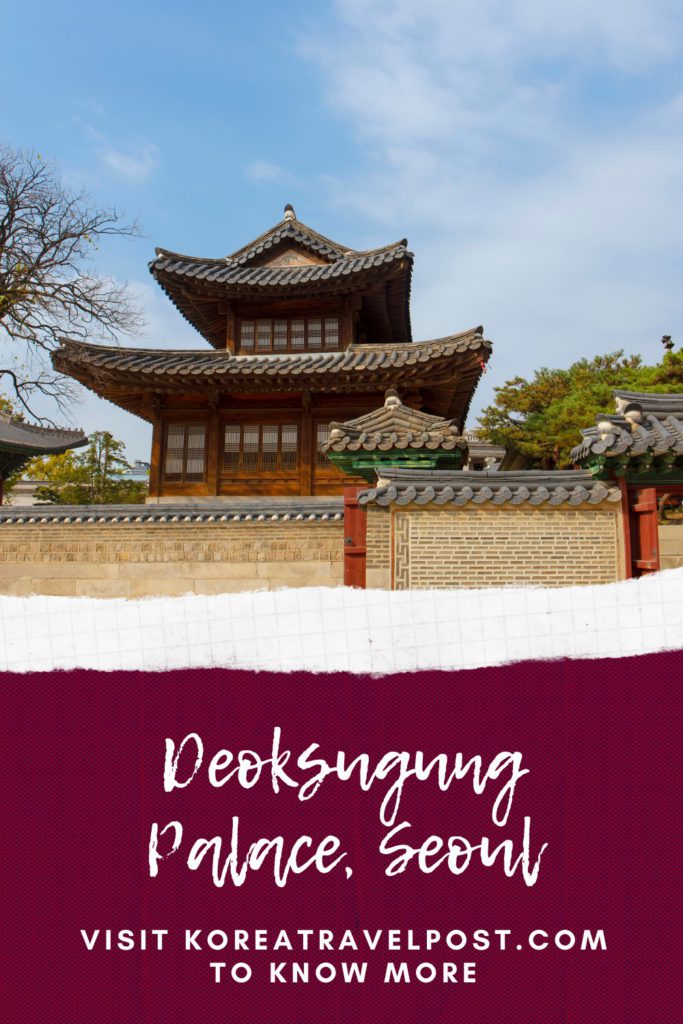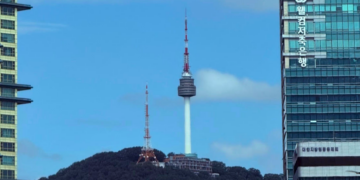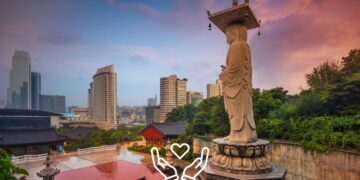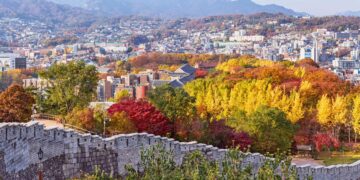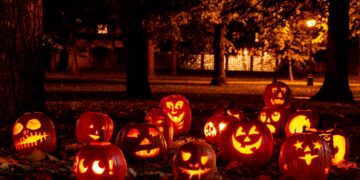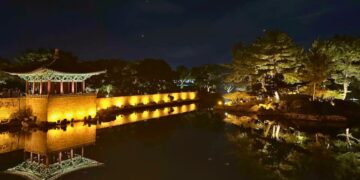Last Updated on 4 years by admin
Deoksugung Palace is the smallest of the five grand palaces of Seoul. It is the final residence of the last king of the Joseon Dynasty, King Gojong. He was also the First Emperor of Korea. The Palace is a unique one among other Korean palaces as it has a modern seal engraving and a western-style architecture.
You can also read about Gyeongbokgung Palace – Korea’s Magnificent Main Palace
History of Deoksugung Palace
This magnificent Seoul palace was first used in the year 1593 by King Seongjong, the fourteenth king of the Joseon dynasty, while he was exiled during the Japanese invasion. At that time, it was known as the Jeongneungdong Temporary Palace. It was later renamed as the Gyeongungung Palace when Prince Gwanghae used it as a residence in 1608. That’s when it became a true royal palace instead of being royal residence.
Then it was renamed as Seogung (West Palace) and then remained as an auxiliary royal residence for the next 270 years.
Much later, in 1897, when King Gojong moved in, he expanded the Palace by taking inspiration from Western architecture. It was proclaimed as the Imperial Palace, and he renamed it back to Gyeongungung.
When King Gojong was forcibly removed in 1907, Gyeongungung Palace was renamed as Deoksugung Palace by Emperor Sunjong in the spirit of praying for long life for Emperor Gojong. The name Deoksugung Palace means ‘Palace of virtue and longevity’.
Many of the original buildings of the Palace have been destroyed. In 1933, all the buildings except the central and western-style buildings were removed. They were replaced with ponds and trails.
Since 2007, restoration work is ongoing to restore the Deoksugung Palace back to its original glory!
What to See at Deoksugung Palace
Within the boundaries of this historical site, you can see a potpourri of contrasting architectural styles – modern, western, and traditional. It is world-famous for its beautifully carved stone-wall road and western-style inspired garden.
Daehanmun Gate
It’s the main gate of Deoksugung Palace located in the east. It is the main entrance of the Palace after Hwangudan Altar was completed. The Changing of the Guard Ceremony occurs right in front of the gate every day. It happens thrice a day, at 11:00, 14:00, and 15:30.
Just beyond the gate, you can see the Geumcheongyo Bridge, the oldest surviving bridge in Seoul.
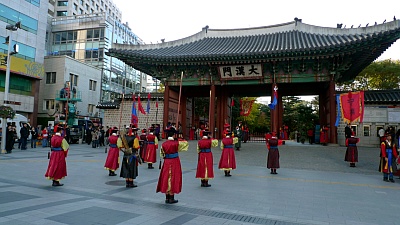
Geumcheongyo Bridge
It’s the oldest surviving bridge in Seoul on the grounds of Deoksugung. The bridge was built in 1411, and it was restored in 1986.
As you enter the gate and cross the bridge over the stream, it symbolizes purification of oneself before entering the Palace complex.
Junghwamun Gate
Junghwamun Gate is the inner gate of Deoksugung and the main gate of the Junghwajeon Hall. It is one of the last structures that were built during the Joseon Dynasty.
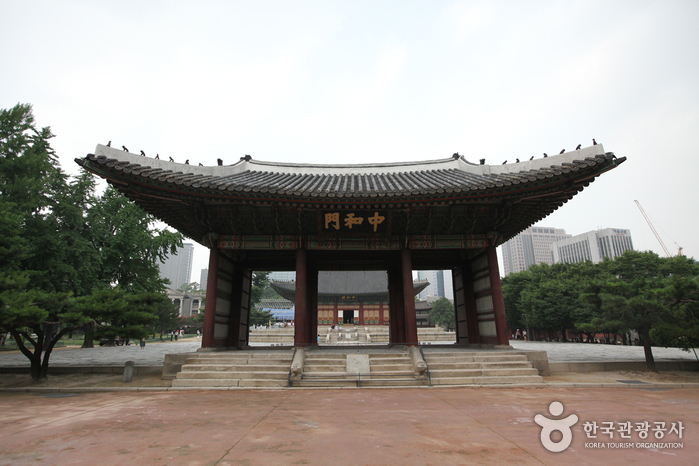
Jeonggwanheon Pavilion
Jeonggwanheon Pavilion is located on the hill of a rear garden of the Palace. It was used to host banquets for foreign visitors and envoys. The construction of the building is influenced by both Korean and Western designs with some Romanesque colonnades and imitation stone columns.
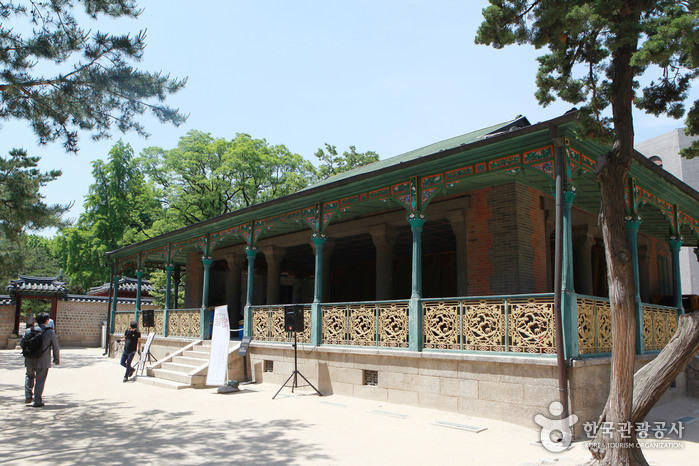
Junmyeongdang Hall
Junmyeongdang Hall is the place where King Gojong handled peace and state affairs during his reign. The original building was destroyed in a fire, but it was later rebuilt. The Junmyeongdang Hall is connected to the Jeukjodang Hall by a narrow corridor.
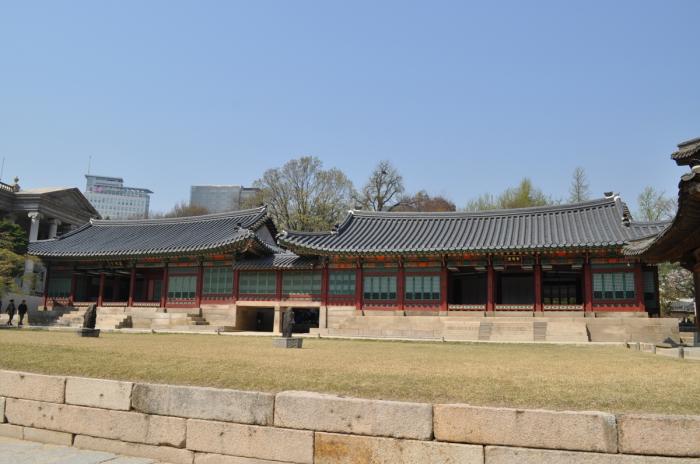
Jeukjodang Hall
Jeukjodang Hall is the location where the crowning ceremony of King Gwanghaegun (1608) and King Injo (1623) took place. The name even means “house where kings ascended their throne.’ The hall was destroyed in a fire along with Junmyeongdang, and they were rebuilt.
Seogeodang Hall
Seogeodang Hall is the most simple and plain-looking building that’s like a wooden house. In 1904, the building was destroyed by a fire and had been rebuilt.
Junghwajeon Hall
Junghwajeon Hall is the main throne hall of the Deoksugung Palace. Earlier, the throne hall used to be Jeukjodang Hall until Junghwajeon Hall was built in 1902. It has a traditional royal residence architecture, and you can see similar construction at the Jongmyo Shrine.
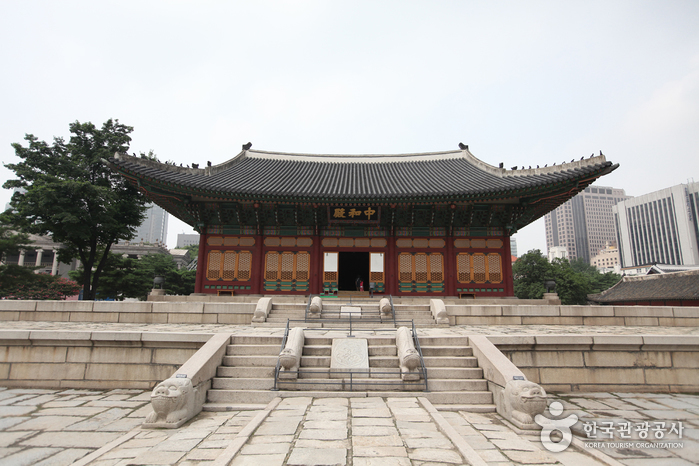
Gwangmyeongmun Gate
Gwangmyeongmun Gate used to be at the south gate of the Deoksugung Palace. It resembles a pavilion and contains a hanging bronze bell, a water clock, and a rocket cannon.
The water clock is automatic striking and is known as Jagyeokru. The bell, forged in 1462 during the Joseon Dynasty, is from Heungcheonsa Temple. The cannon, which can be wheeled, uses gunpowder and can fire 100 arrows at the same time.
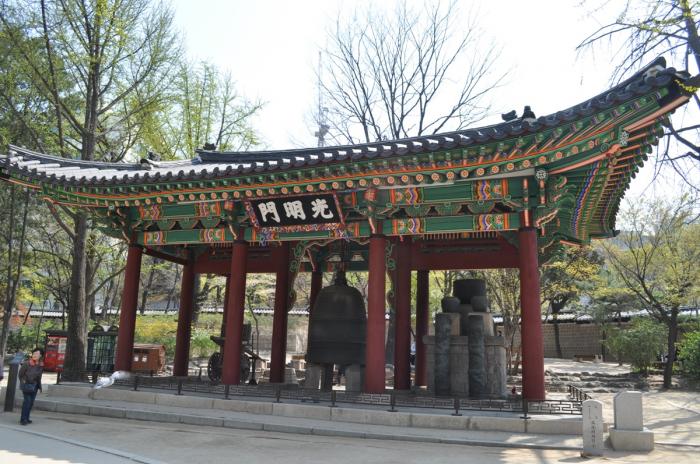
National Museum of Modern and Contemporary Art, Deoksugung
The museum (MMCA, Deoksugung) is located inside the Deoksugung Palace grounds.
You can read more about MMCA, Deoksugung in the post – Explore Art Galleries and Museums of Seoul
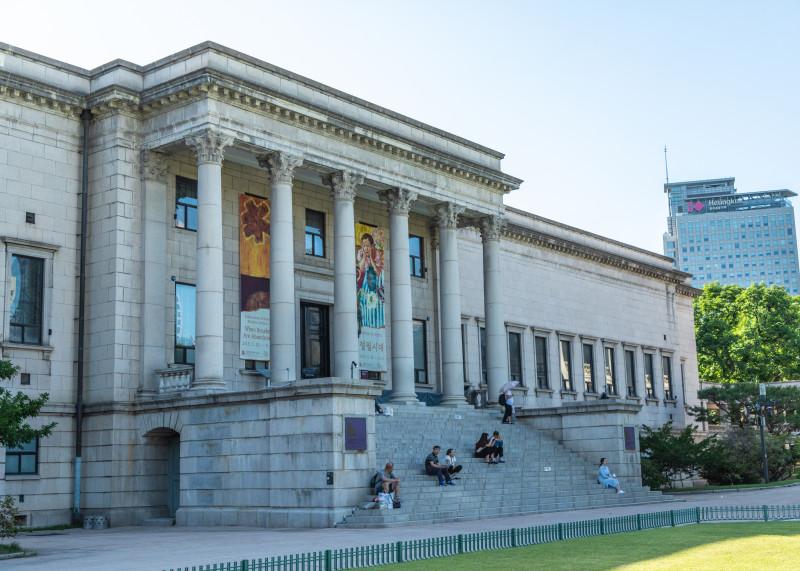
Seokjojeon Hall
Seokjojeon Hall is another western-style building that used to be an audience hall and sleeping quarters of King Gojong. The architecture of the building is 19th century neoclassical with a triangular roof. It is the first Western-style building in Korea and served as the residence of the Korean royal family in the early 20th century before Japanese colonial authorities turned it into an art gallery.
In 2014, the building was reopened as the Daehan Empire History Museum after years of extensive work to restore the building. The building interior was destroyed by the Japanese and the exterior was damaged by fire during the 1950-53 Korean War.
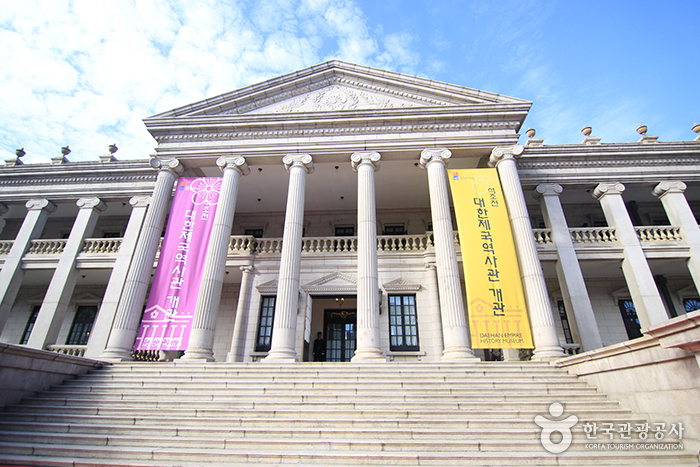
Deokhongjeon Hall
This hall is the location where King Gojong met with high ranking envoys and other officials. The construction of the hall was completed in 1911, and it is one of the newest structures around the Palace.
The exterior architecture of the hall is traditional Korean, while the inside architecture takes more inspiration from western style.
Important Info About Deoksugung Palace
Where: 99 Sejong-daero, Jung-gu, Seoul
Timings:
- 09:00 – 21:00 on all days except it is closed on Mondays
- Changing of the Royal Guards Ceremony -11:00, 14:00, 15:30.
- Ceremony Route – Daehanmun Gate at Deoksugung Palace → Seoul Plaza → Cheonggye Plaza → Gwangtonggyo Bridge → Bosingak Bell.
- Bosingak Bell Ringing Ceremony takes place at noon.
Ticket: Individuals – Adults 1,000 won / Children 500 won
Website: www.deoksugung.go.kr
The New Normal for Deoksugung Palace
In the light of COVID-19 situation worldwide, you can now take a virtual tour of Deoksugung Palace thanks to the collaborative efforts of the Cultural Heritage Administration’s (CHA) Deoksugung Palace Management Office and South Korea’s top mobile carrier, SK Telecom. You can enjoy the VR Tour via the SK Telecom’s Jump VR app.
The VR tour of Deoksugung Palace is offered through a series of 360-degree VR videos that take visitors on a guided tour of traditional and modern palace buildings of Deoksugung. Two videos of Seokjojeon were released on July 13 and two more on Daehanmun, Junghwajeon, Hamnyeongjeon, Jeukjodang and Seogeodang are scheduled to be released on July 17, 2020.
The Deoksugung VR content is quite realistic with an actual guide appearing the video to explain historical meanings, which users can listen to while enjoying a 360-degree view of their surroundings.
With these virtual videos, you can even explore the previously restricted areas like a closer look at the ceiling decoration with twin-dragons from where the emperor’s throne was located in the Junghwajeon Hall, and the British antique furniture placed in the emperor’s bedroom in the Seokjojeon Hall. Along with these, the inside of Hamnyeongjeon Hall and Seogeodang Hall are not open to the public generally, but will be available for virtual tours through this application.
Along with the Deoksugung VR, SK Telecom, earlier in March, also launched an AR Deoksu Palace service which allows users to view 12 palace buildings in 3D augmented reality (AR).
Love it?
Pin it and save it for later!
